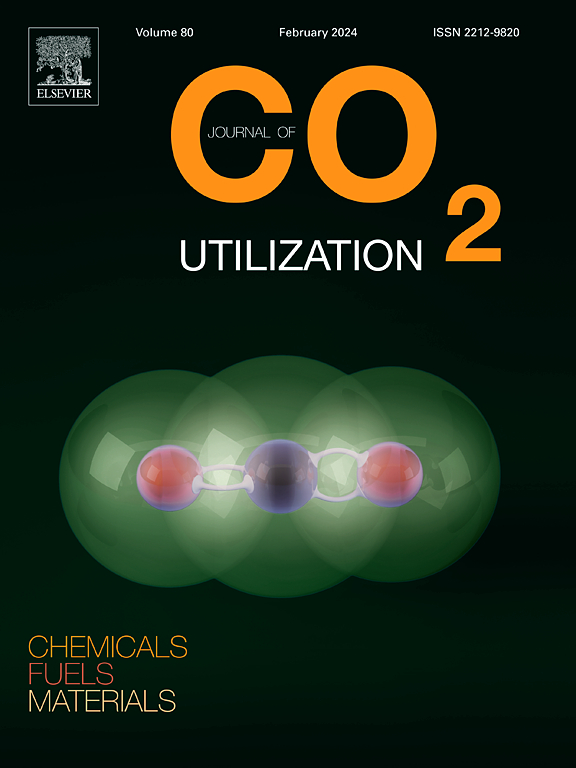Polyurethane foam lightweight concrete: Preparation, CO2 fixation properties and mechanism
IF 8.4
2区 工程技术
Q1 CHEMISTRY, MULTIDISCIPLINARY
引用次数: 0
Abstract
To enhance the carbon sequestration of concrete and the mechanical properties of polyurethane foam concrete (PFC), a novel formulation was developed using ordinary Portland cement, basalt stone powder, diphenylmethane diisocyanate, and polyether polyol. This study investigated the optimized production of PFC and its CO2 capture efficiency. The optimal polyurethane crosslinking was achieved with a specific diphenylmethane diisocyanate (MDI) to polyether polyol (PP) ratio, resulting in PFC with ideal densities for structural applications. Comprehensive testing after a curing period of 48 hours yielded a maximum compressive strength of 9.16 MPa and an improved flexural strength of 4.3 MPa, demonstrating the formulation's effectiveness. Thermogravimetric analysis highlighted the CO2 absorption capacities of PFC at various densities. Furthermore, an accelerated carbonization study revealed significant depth increases within the initial 8 hours. Microstructural analysis confirmed that lower-density PFC samples exhibited enhanced carbonization, with notable increases in CaCO3 content, suggesting improved carbon sequestration potential. These findings indicate that the tailored PFC formulation not only strengthens material properties but also contributes to environmental sustainability by effectively capturing CO2.
聚氨酯泡沫轻质混凝土的制备、CO2固定性能及机理
为了提高混凝土的固碳性能和提高聚氨酯泡沫混凝土(PFC)的力学性能,采用普通硅酸盐水泥、玄武岩石粉、二苯基甲烷二异氰酸酯和聚醚多元醇配制了新型聚氨酯泡沫混凝土。本研究考察了PFC的优化生产及其CO2捕集效率。通过特定的二苯基甲烷二异氰酸酯(MDI)与聚醚多元醇(PP)的比例,可以实现最佳的聚氨酯交联,从而获得具有理想密度的PFC,用于结构应用。经过48 小时养护后的综合试验,最大抗压强度为9.16 MPa,抗折强度提高4.3 MPa,证明了配方的有效性。热重分析强调了PFC在不同密度下的CO2吸收能力。此外,一项加速碳化研究显示,在最初的8 小时内,深度显著增加。微观结构分析证实,低密度PFC样品的碳化作用增强,CaCO3含量显著增加,表明固碳潜力增强。这些发现表明,定制的PFC配方不仅增强了材料性能,而且通过有效捕获二氧化碳有助于环境的可持续性。
本文章由计算机程序翻译,如有差异,请以英文原文为准。
求助全文
约1分钟内获得全文
求助全文
来源期刊

Journal of CO2 Utilization
CHEMISTRY, MULTIDISCIPLINARY-ENGINEERING, CHEMICAL
CiteScore
13.90
自引率
10.40%
发文量
406
审稿时长
2.8 months
期刊介绍:
The Journal of CO2 Utilization offers a single, multi-disciplinary, scholarly platform for the exchange of novel research in the field of CO2 re-use for scientists and engineers in chemicals, fuels and materials.
The emphasis is on the dissemination of leading-edge research from basic science to the development of new processes, technologies and applications.
The Journal of CO2 Utilization publishes original peer-reviewed research papers, reviews, and short communications, including experimental and theoretical work, and analytical models and simulations.
 求助内容:
求助内容: 应助结果提醒方式:
应助结果提醒方式:


